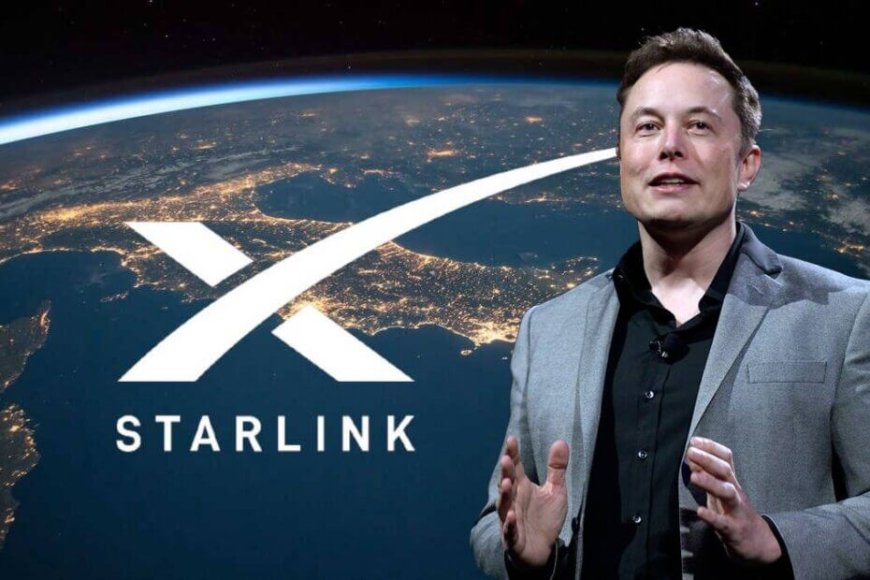Starlink Finally Cleared to Launch in India: Elon Musk’s Satellite Internet Ready for Takeoff
Starlink has received final regulatory approval to launch satellite internet in India. Learn what this means for digital access, infrastructure, and competition in India’s telecom market.

After years of anticipation and regulatory hurdles, Elon Musk’s Starlink has officially received final approval to offer satellite-based communication services in India. The clearance, granted by IN-SPACe (Indian National Space Promotion and Authorization Center), represents a significant milestone not only for Starlink’s ambitions but also for India’s digital inclusion goals.
With this final nod, Starlink is now poised to bring its low-Earth orbit (LEO) satellite broadband services to one of the world’s largest and most underserved internet markets.
What the Approval Means
The regulatory approval includes authorization to operate Starlink’s Gen-1 satellite constellation over Indian skies. This system consists of thousands of LEO satellites orbiting at altitudes ranging from 540 to 570 kilometers. These satellites work in sync to deliver high-speed, low-latency internet connectivity even in remote or inaccessible regions.
The IN-SPACe clearance is valid for five years or until the end-of-life of the Gen-1 constellation—whichever comes first. This timeline provides Starlink with a firm window to roll out and scale its operations, build infrastructure, and comply with additional regulatory requirements.
A Long Road to Approval
Starlink began its journey in India in 2021, when it initially accepted pre-orders from customers in rural and semi-urban areas. However, it was soon asked to halt operations and refund customers due to the lack of a valid telecom license.
Over the next few years, Starlink worked to comply with Indian legal frameworks. It secured a GMPCS (Global Mobile Personal Communication by Satellite) license from the Department of Telecommunications earlier in 2025. The final IN-SPACe clearance now completes the legal foundation needed for commercial operations.
This approval places Starlink among a handful of companies permitted to offer satellite broadband services in India. Currently, only a few players—such as OneWeb and Reliance Jio in partnership with Luxembourg-based SES—have similar regulatory status.
What Comes Next
Although the final space authorization has been granted, several operational steps remain before Starlink can begin offering services to the public:
-
Spectrum Allocation: Starlink still awaits the administrative allocation of satellite spectrum, which is crucial for ground-to-satellite signal transmission. This spectrum is expected to be assigned directly by the Indian government without an auction process, a method favored for satellite services.
-
Ground Infrastructure: Starlink must establish necessary ground stations and control centers within India. These facilities ensure signal coordination, regulatory compliance, and secure data flow.
-
Hardware Distribution: Customer terminals—compact dish antennas known as “Starlink kits”—will need to be imported or manufactured locally. The logistics and pricing of these terminals will impact how quickly services can scale.
-
Compliance Testing: The services and hardware will undergo performance validation, cybersecurity vetting, and alignment with India’s telecom and space safety standards.
India’s Satellite Internet Landscape
India’s vast geography, with many mountainous, rural, and island regions, poses a significant challenge to fiber-optic and cellular connectivity. Satellite-based communication offers a promising alternative to bridge the digital divide.
With more than 600 million people still lacking stable high-speed internet access, Starlink’s technology can be a game-changer. Its LEO constellation allows for faster internet compared to traditional geostationary satellites, making it ideal for real-time applications such as video conferencing, telemedicine, online education, and even agricultural analytics.
The Indian government’s Digital India initiative also aims to improve internet penetration across the country. Starlink’s entry aligns with this vision by potentially providing affordable, high-speed access in regions where conventional networks fail.
Challenges Ahead for Starlink
While regulatory clearance is a major victory, Starlink faces several strategic and market-level challenges in India:
-
Affordability: India has one of the lowest average data costs in the world. Competing with domestic providers on price while maintaining profitability will be difficult for a capital-intensive service like satellite internet.
-
Local Manufacturing Requirements: The Indian government strongly encourages local production under its "Make in India" program. Starlink may be expected to manufacture or assemble parts of its terminals within the country.
-
Policy Volatility: Changes in telecom or satellite policies can impact operations. Additionally, India’s national security considerations demand strict monitoring and may influence the extent of foreign technology deployment.
-
Competition: Besides OneWeb and Jio-SES, Amazon’s Project Kuiper and other global players are preparing to enter the Indian market. These competitors could challenge Starlink on pricing, performance, and local partnerships.
Strategic Implications for India and the Global Market
Starlink’s official entry into the Indian market represents more than just a business win—it highlights India’s growing importance in the global space economy. As the third-largest startup ecosystem in the world and an emerging space-tech hub, India is increasingly welcoming private-sector players in its once tightly controlled satellite industry.
This move also strengthens India’s global image as a digitally forward nation willing to embrace advanced communication technologies. Furthermore, by hosting ground infrastructure and providing access to local services, Starlink can contribute to strategic goals like disaster preparedness, border connectivity, and improved access to e-governance platforms.
For Elon Musk and SpaceX, India is a critical market. Not only does it offer scale, but it also provides a launching pad for expansion across South Asia and neighboring regions. Success here could influence Starlink’s regulatory negotiations in other countries.
Conclusion
The final regulatory clearance granted to Starlink by IN-SPACe in July 2025 marks a defining moment in India’s telecommunications journey. While technical, financial, and logistical hurdles remain, the green light represents a strong step toward greater connectivity for millions of Indians. As Starlink prepares for deployment, the world watches closely—because how it performs in India may well determine the global trajectory of satellite internet in the years to come.











